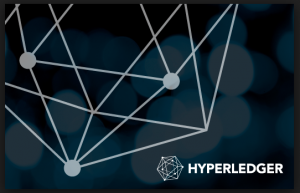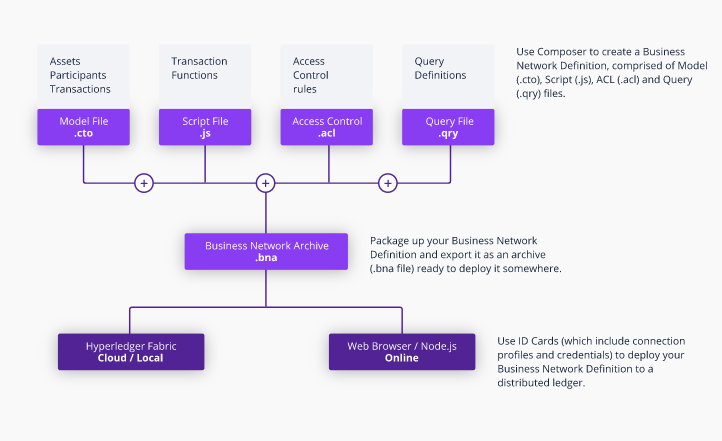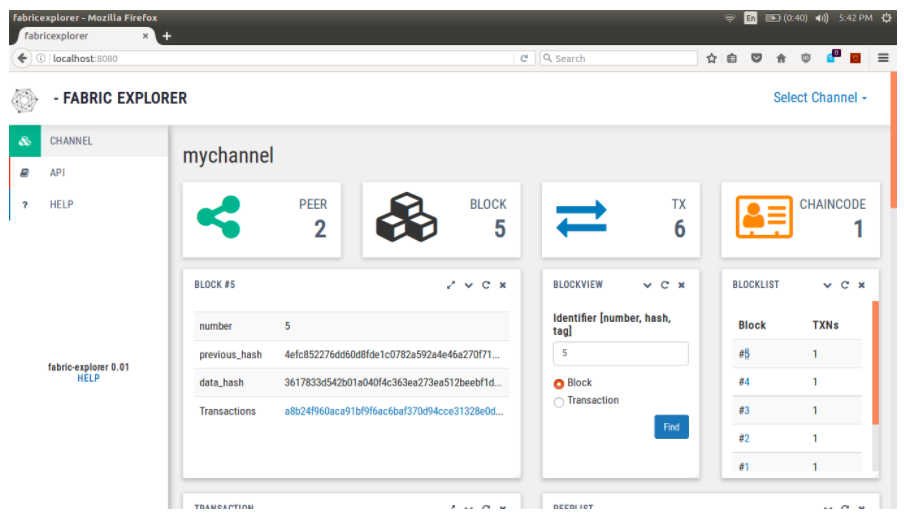
This article represents a list of Hyperledger tools and frameworks for building Blockchain applications and when to use each one of them.
Hyperledger Frameworks
The following is the list of frameworks that can be used to create blockchain applications based on distributed ledger technology.
Hyperledger Fabric
Hyperledger Fabric is a blockchain framework implementation. It is one of the foundation framework for developing / building Blockchain applications or solutions with a modular architecture. The most striking feature of Hyperledger Fabric is that it allows components, such as consensus and membership services, to be plug-and-play. At the core of Hyperledger Fabric is container technology which is used to host smart contracts called chaincode that comprise the application logic of the system. The following is the list of cool features of Hyperledger Fabric:
- Private channels for sharing confidential information
- Pluggable Consensus (ordering service) and, membership service provider services
- Support for CouchDB for storing world state
The detailed documentation can be found on the Hyperledger Fabric Documentation page.
When to use Hyperledger Fabric
If you are planning to build your Blockchain permissioned network with customized consensus algorithms (optional) and possibly custom membership services (optional), Hyperledger Fabric is the way to go. If you foresee the need for custom channels for private exchange of transsactions between different participants in your Blockchain network, Hyperledger Fabric is the way to go.
Hyperledger Sawtooth
Hyperledger Sawtooth is an enterprise distributed ledger modular platform for building, deploying, and running Blockchain network. The most striking features of this framework are some of the following:
- Scalability: Sawtooth was originally designed to overcome scalability challenges of a typical blockchain network such as Bitcoin. To meet the scalability requirement, the consensus algorithm such as PoET (Proof of Elapsed Time) was designed. Simpli speaking, PoET is a form of random leader election, wherein each validator node waits a random amount of time before trying to claim a block. In other random leader election algorithms like Proof of Work, that randomness is enforced by searching for partial hash collisions. PoET replaces that work with trusted computing.
- Security: In order to narrow attack surface, Sawtooth came up with a contract logic which is termed as transaction families.
- Greater autonomy for each participant in the Blockchain network: This is achieved using the fact that each participant is able to maintain their own nodes rather than a select group of business entities maintaining the node. This is made possible owing to the fact how Sawtooth addressed key related underlying issues such as scalability and security as mentioned above.
The detailed documentation can be found on the some of the following pages:
When to use Hyperledger Sawtooth
IMHO, the following can be some of the reasons. Please feel free to suggest.
- When you see the your requirements of scalability and security matches well with that of Sawtooth, you could choose to go with Sawtooth.
- When you see that consensus algorithm such as PoET would work fine for your business problem, Sawtooth can be the way to go.
Given above, Supply-chain networks can choose to adopt Hyperledger Sawtooth for implementing Blockchain network.
Hyperledger IROHA
Hyperledger IROHA is a blockchain platform implementation which is designed for incorporate distributed ledger technology (Blockchain) into infrastructural projects. It features a simple construction; modern, domain-driven C++ design, emphasis on mobile application development and a new, chain-based Byzantine Fault Tolerant consensus algorithm, called Sumeragi.
The detailed documentation can be found on the some of the following pages:
When to use Hyperledger IROHA
IMHO, the following can be some of the reasons. Please feel free to suggest.
- When you are looking for a simple, lightweight blockchain framework for creation and management of assets, Hyperledger IROHA can be the way to go.
Hyperledger Burrow
Hyperledger Burrow is a permissioned Ethereum smart-contract blockchain node that executes smart contract code following the Ethereum specification. Burrow as a blockchain node has following as key building blocks:
- Permissioned Ethereum virtual machine
- Consensus engine: Used for ordering and finalizing the transaction based on BFT tendermint protocol. The consensus is cryptographically secured.
- API gateway
- Smart contract application: Validate the transaction and apply the application state
The detailed documentation can be found on the some of the following pages:
When to use Hyperledger Burrow
IMHO, the following can be some of the reasons. Please feel free to suggest.
- If you are looking to implement your Blockchain network based on Ethereum specifications, Hyperledger Burrow can be a suitable choice.
- If data security and privacy is of utmost concern, Burrow could be a good choice to explore.
Hyperledger INDY
Hyperledger INDY is a distributed ledger, purpose-built for decentralized identity. It provides tools, libraries, and reusable components for creating and using independent digital identities rooted on blockchains or other distributed ledgers so that they are interoperable across administrative domains, applications etc. With DLT, INDY puts people — not the organizations — in charge of decisions about their own privacy and disclosure.
The detailed documentation can be found on the some of the following pages:
When to use Hyperledger INDY
If you are looking to build blockchain network around connection contracts, revocation, novel payment workflows, asset and document management features, creative forms of escrow, curated reputation etc., you can consider to use Hyperledger INDY.
Hyperledger Tools
The following is the list of tools which can be used across different Hyperledger frameworks for building Blockchain applications:
Hyperledger Composer
Hyperledger Composer is an application development framework (ADF) for building blockchain business networks using Hyperledger Fabric framework. It enables business owners and the developers to create smart contracts and blockchain applications to solve business problems. It can be used to model business network including assets and transactions, and, integrate existing systems and data with the blockchain applications. The following architecture diagram represents the business network modeling and deployment on Hyperledger Fabric. The details on Hyperledger Composer architecture can be found on Introduction to Hyperledger Composer Page.

Figure 1. Hyperledger Composer Architecture
The following are some of the important bookmarks in relation to Hyperledger Composer:
- One can start playing with Hyperledger Composer using Online Composer Playground.
- Get started with installation and greater details by visiting Hyperledger Composer.
- Code on Github for Hyperledger Composer
When to use Hyperledger Composer
Hyperledger Composer can be used to model business network and deploy the network on to Hyperledger fabric in easier and faster manner. It could prove handy to both business owners and Blockchain developers to collaborate on building Blockchain network.
Hyperledger Cello
Hyperledger Cello is a a blockchain module toolkit which can help create Blockchain-as-a-service platform to provision a customizable Blockchain networks in easier and faster manner. It helps check the system status, adjust the chain numbers, scale resources etc., through dashboards. It helps manage the lifecycle of blockchains, e.g., create / start/ stop/ delete/ keep health automatically. The following represents high-level architecture diagram of how Hyperledger Cello fits in overall scheme of things.
Read further details on this page, Getting started with Hyperledger Cello.
When to use Hyperledger Cello
Hyperledger Cello can be used to maintain the Blockchain networks provisioning and management from infrastructure perspective. If you are an Infrastructure Engineer, you would want to try out Hyperledger Cello for managing Blockchain networks from IT perspective.
Hyperledger Quilt
Hyperledger Quilt, primarily, helps in transfer of value across distributed and non-distributed ledgers. In other words, it helps in transfer of value across different Blockchain networks. A user registered with one Blockchain network can securely transfer the value to another user registered with another Blockchain network. This feature is very powerful as it enables interoperability between Blockchain networks. Hyperledger Quilt is build based on Interledger Protocol (ILP). The Interledger Protocol provides for routing payments across different digital asset ledgers while isolating senders and receivers from the risk of intermediary failures.
Hyperledger Quilt is yet to come in production. Greater clarity on its feature and functionality will come in near future.
When to use Hyperledger Quilt
If there is a need to enable interoperability (value transfer) across Blockchain networks, one can go about using Hyperledger Quilt.
Hyperledger Explorer
Hyperledger Blockchain Explorer can be used to view, invoke, deploy or query blocks, transactions and associated data, network information (name, status, list of nodes), chain codes and transaction families, as well as any other relevant information stored in the ledger. In simple words, It is a web application for viewing activity on the underlying blockchain network.
One can get started with by creating & running a Hyperledger Fabric Blockchain network (first network that comes out-of-box) and modifying the config.json, configuration file, of Composer to view the application. The following is the screenshot representing view of Hyperledger fabric blockchain network.

Figure 2. Hyperledger Explorer
Hyperledger composer supports the REST APIs for getting access to some of the following information:
- Get block information (by block hash, block number)
- Transaction
- Peer status
- Get channel information
- List of chaincode installed and instantiated on specific channels
- Get block count on specific channel
- Create and update channel
Read further details on this page, Getting started with Hyperledger Explorer.
When to use Hyperledger Explorer
It may be good idea to install Hyperledger Explorer as you install your first Hyperledger Fabric network. This is because it provides ease of readability and doing other operations with Hyperledger Fabric network.
- Coefficient of Variation in Regression Modelling: Example - November 9, 2025
- Chunking Strategies for RAG with Examples - November 2, 2025
- RAG Pipeline: 6 Steps for Creating Naive RAG App - November 1, 2025
Excellent note for Hyperledger tools and frameworks.
Thanks Amit